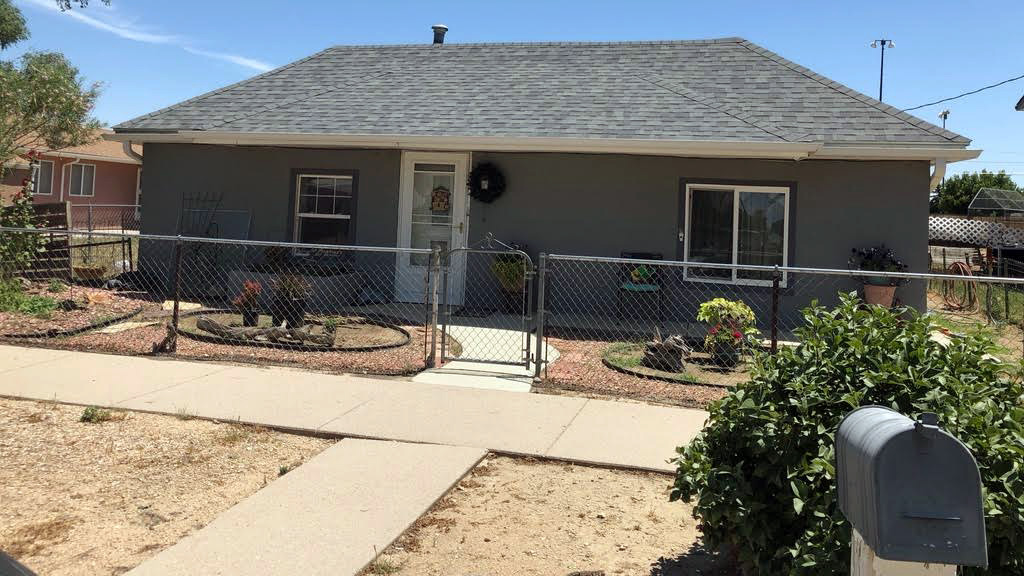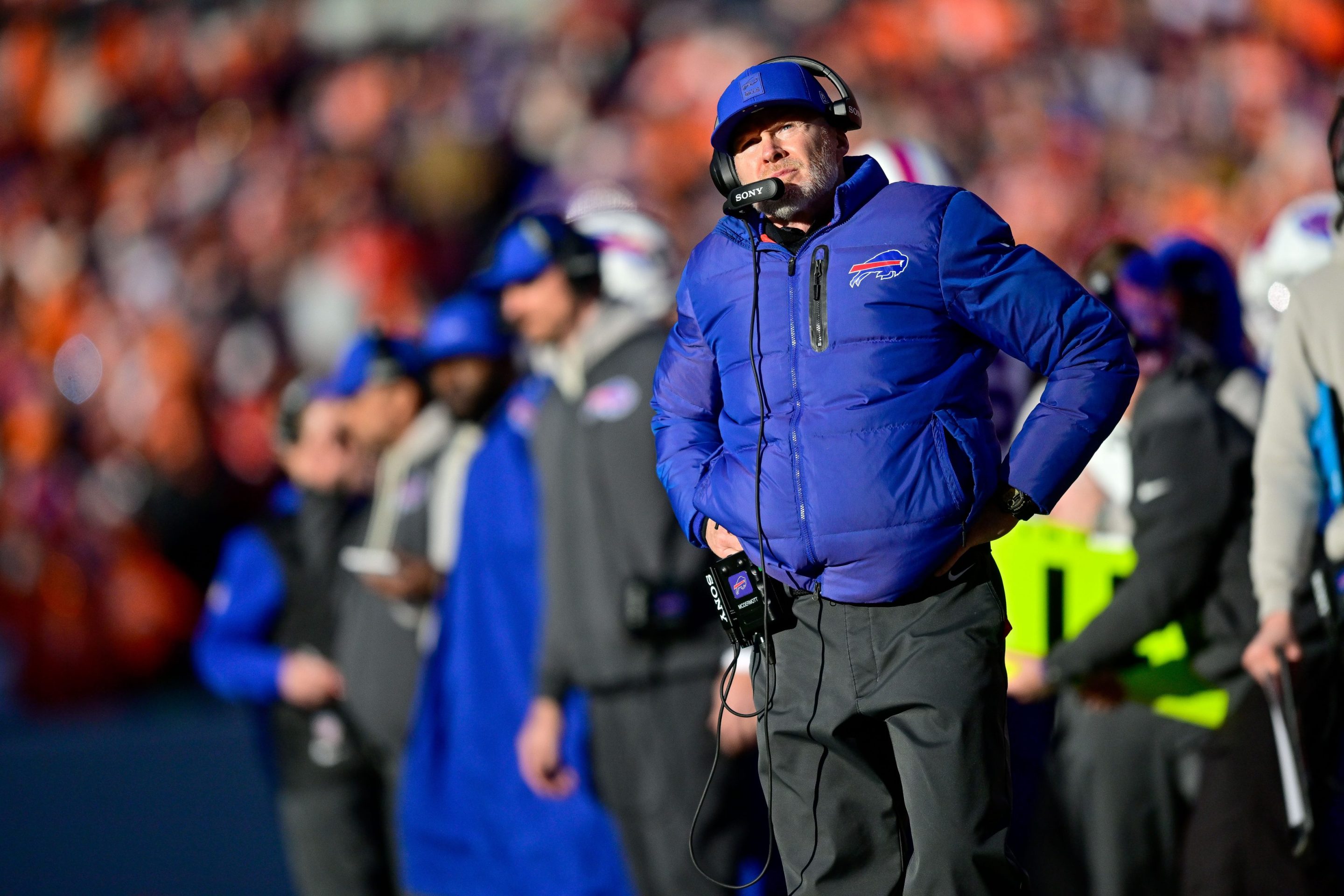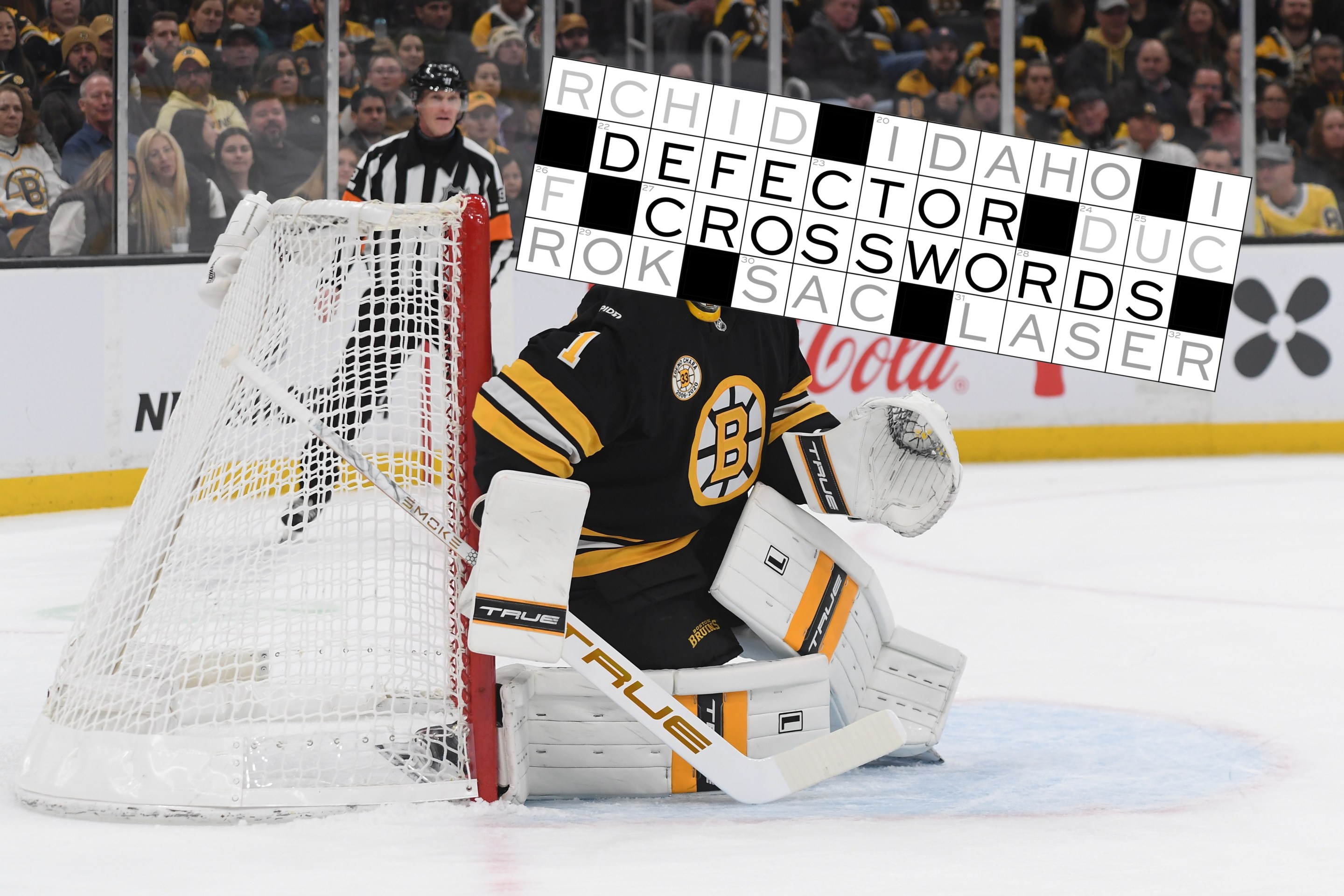In a small town in Colorado, there is a small house on a quiet street, like millions of others around the country. The walls of these homes contain the memories of entire childhoods—early birthdays, long summers, adult conversations overheard from dark bedrooms. In this particular house, Lydia Correa has lived her several decades of her life. It's where she spent time raising her children and caring for now-departed relatives. She has never had much, because she’s been disabled for most of her adult life. What she does have, the only thing she can pass on to her children when she dies, is this house. It’s worth about $35,000. It’s also worth everything.
Lydia lives alone, subsisting on Supplemental Security Income. Now 73, Lydia was diagnosed in her 30s with muscular dystrophy, a condition that makes it hard for her to do physical activity. “If I fall outside and nobody's there, I’m done,” Lydia told me. “That's why I have to carry my phone with me everywhere I go.” When we first talked on the phone, she sounded on the verge of tears. Back when she was first diagnosed, she said, “They sent me home to die.” She has survived her whole life, and kept up the house, on very little income. Decades ago, Lydia won $395,000 in a contest. It paid out about $20,000 per year for 20 years, meaning she didn’t qualify for SSI until it ran out. Lydia told me proudly how she put away enough money to have the stucco redone.
If Lydia wanted any sort of home-based health care, the kind that experts (and most people in need of care) agree is much better than going into a facility, she would need some sort of assistance to afford it. The average cost of home health care in the United States is $4,957 a month. The maximum Supplemental Security Income payment is $914 per month.
This is, ideally, what Medicaid is meant for. But Lydia knows about Medicaid estate recovery, the program through which states "recover" the cost of Medicaid spending on an individual. Most of the time, the only major assets owned by the sort of people using Medicaid to pay for long-term care are their homes. When Lydia was receiving her contest winnings, she earned slightly too much to qualify for Medicaid. When she started receiving SSI again, she automatically qualified for Medicaid, but for whatever reason, she didn’t know that.
Lydia’s children help her out when they can, but they have lives of their own. One of Lydia’s sons lives an hour away, the other is disabled, and Lydia’s daughter Angela is a working single mother. Like millions of families across America, the holes in the social safety net have left them in an impossible predicament: balancing their own lives and work with the requirements of caring for an aging parent. Lydia herself is no stranger to this. Even with her disability, she helped care for her parents and her brother before their deaths. Angela told me she believes Lydia’s role as caregiver was the only reason she was able to keep the house from being taken under estate recovery after they died. Angela sent me a photo of the house. From the outside, it looks small, but beautifully kept, with an immaculate yard. No grass, but neat little beds of plants and artfully placed branches.
Angela would much rather her mother choose getting the help she needs over passing the house on to her and her siblings. But her mother is “a tough lady,” she told me, and stubborn. In fact, all parents are stubborn, Angela says, because “they want to take care of their kids. That's a natural impulse—but kids want to take care of their parents too.”
Angela is a single mom, living “pretty much paycheck to paycheck.” She asked around at her job with the county government, hoping her colleagues could help her mom get Medicaid to pay for this care without putting the house at risk. The answer, she heard, was no. For a long time, Lydia was under the impression she wouldn’t qualify for Medicare, either, because she hadn’t worked enough. So for years, out of fear, Lydia paid her medical bills herself, crawling along the floor when she fell, just to ensure that she’ll leave something to her children when she dies.
In 1993, Congress passed a budget that required states to attempt to recover the costs of covering long-term care for Medicaid patients over the age of 55, after their deaths. This was the year Bill Clinton took office, elected promising “to end welfare as we know it.” Prior to 1993, states had the option to pursue estate recovery, but it wasn’t mandatory. Even after the new requirement went into effect, some states resisted implementing it; Michigan was sued into enacting an estate recovery program, which it did in 2007. Many states recover the cost of all Medicaid spending for those over the age of 55, not just long-term care recipients. Some states will pursue recovery if the estate exceeds just $100. Hardship waivers are available, but rarely sought or granted.
The children of deceased Medicaid recipients, who may have expected to inherit a home or benefit from selling it, may find that what was supposed to be a minor windfall has now become a debt to the state. In extreme cases, it can mean the home they live in is now liable to be sold by the state to recoup the debt, causing understandable terror. This all happens at a time of, quite often, deep grieving and loss.
For the better part of the 30 years since that budget was passed, Medicaid estate recovery was a little-discussed subject. In the past few years, a few high-profile news stories—one from The Atlantic in 2019, and another last year in US News and World Report—have shed more light on it. These stories focused on the shock experienced by the children of people who have passed, and the financial burden estate recovery places on them. It is unconscionable that states do this to people experiencing such an enormous loss, for almost no fiscal benefit. It’s one final punishment for being poor in the United States.
Less attention has been paid, though, to stories from this side of the final curtain: the elderly Americans who have been scared away from using benefits they are entitled to, and that could dramatically improve their lives, because they don’t want to lose their houses, or whatever else they have to pass on to their children. Many of these people are misinformed about what estate recovery would do, and whether it would apply to them. They’re also mostly too poor to afford professional help figuring it out, and legal aid clinics in the United States are a small levee against the tsunami of vicious bullshit that the legal system throws at the poor. The rules are complicated, vary hugely by state and by individual circumstances, and help navigating those rules is often locked behind an attorney’s fee.
The fear of Medicaid estate recovery is so powerful in part because of this lack of information, and because the threat of eviction, however unlikely, is so violently horrible. In the United States, eviction can be a death sentence, particularly for the elderly. Once that prospect has been raised, it’s hard to remain calm; facts about complicated and arcane programs travel slower than fears. People hear rumors that Medicaid will “take the house” after they die, or even while they’re still alive (which doesn’t happen—it’s called “estate recovery” because it happens during the estate process, after death). For the elderly poor, the prospect forces an impossible choice, between their health and their sole marker of wealth.
Nebeu Shimeles had no idea why the lien was on his parents’ old house. His father had passed away in 2018, at the age of 68, following years of illness, the last three of which saw Nebeu act as a full-time caretaker. The lien was just one piece of paper among the many bits of exhausting legal correspondence one encounters when a parent passes away.
In 2007, his parents had been evicted from their house in Seattle, after falling behind on what Nebeu called an “incredibly shady mortgage.” He assumed that the house would be foreclosed on, since that was what the increasingly stern letters they received warned would happen. After they were evicted, signs and locks appeared on the fence, and his parents “were just told not to come back.” This was also when Nebeu’s father’s health began to fail, making him unable to work.
Four years later, Nebeu’s father moved into a senior living facility, paid for by Medicaid. Three years after that, he was awarded low-income housing, and the following year, Nebeu moved in with him, providing “round-the-clock care” following a kidney transplant. At that point, Nebeu discovered the old house was never actually foreclosed on. “It seemed weird” that nothing had happened to it in all that time, Nebeu told me, “after eight years of no one living there, in a neighborhood that's gentrifying.” But Nebeu was busy, providing care to his father while working full-time. He reached out to legal clinics and law firms for help, but never got to the bottom of it. There were more pressing things to deal with.
Around the time of the eviction, back in 2007, Nebeu’s parents divorced. His mom's name had been on the house this whole time, so when his dad passed, he “wanted to figure all that out so that if there's money in [the house], get it to her or just get that monkey off her back.” Nebeu said the loan’s owners pestered his parents for money for years, but of course, “they didn’t have it.”
When his father died, Nebeu thought they would finally be able to sell the house in a short sale, recouping as much as they could to pay off debt. But when they tried to do so, something came up: A lien on the house from the Department of Social and Health Services. His mother, whose name was still on the deed despite not being involved with her ex-husband for many years, ended up having to declare bankruptcy to discharge the debt. Nebeu was confused. "Why would my dad owe a huge unidentified lien to DSHS?” Again, it was a confounding mystery, but not a high priority one, given what he felt were the low chances of getting any of it overturned.
It wasn’t until several years later, when he read an interview I published with a hospice social worker that mentioned Medicaid estate recovery and linked to the Atlantic article about it, that he understood what had happened. Nebeu requested what documents he could from DSHS and shared them with me. They detail hundreds of individual line items and charges for various medical services Nebeu’s father received over the years, from “Wellness education” ($3.37) to “T1019-Personal care [service] per 15 min” ($2,074).
In some cases, the amount owed can be far greater than the actual cost of the services received, because of the role played in some states by Medicaid managed care companies—the same health insurance companies we all know and love. These companies make money by spending less on the care of patients than the flat fee they receive from the state for that care. The companies pocket the difference, but the deceased’s family owes the entire, fake amount paid by the state. The state can also choose to charge interest on Medicaid estate recovery claims. Until 2021, the interest rate on unpaid claims in Massachusetts was 12 percent (it is now 3.25 percent). In California, the maximum interest rate is 7 percent. There’s no particular pattern to which states are the most aggressive on estate recovery. Tennessee recovered almost six times as much money in FY2019 as Texas, with a population one-fourth the size. It’s not a partisan thing, either: Solidly blue New Jersey is one of the most aggressive states for recovery.
Nebeu’s childhood home was sold in foreclosure for $652,000, then slickly renovated and sold for just under a million dollars in early 2021. His parents bought it in 1998 for $144,950.
In order to receive Medicaid coverage for long-term care, including institutional or home-based services, applicants must undergo what’s known as an asset or resource test. These tests have absurdly strict standards. In most states, the asset limit is $2,000 for individuals and $3,000 for couples, a limit that has not been updated since 1989. All transactions over the previous five years are subject to review, so if you transferred your house to your kids four years ago, that can be disqualifying. Letha McDowell, an elder law attorney in Virginia and North Carolina, told me that even the most innocuous transactions can trip up applicants. For example, a couple giving their daughter $20,000 to pay for a wedding, then applying for Medicaid the next year, could fall afoul of the transfer penalty. Even if you do qualify, proving it is arduous. A nonprofit worker in Pennsylvania whose work involves helping elderly people access Medicaid once told me about assisting a man with his application, which required him to print out over a hundred pages of bank statements, for which the bank wanted to charge a dollar a page. The man died before he qualified for Medicaid.
The one asset that doesn’t count towards this limit is your house, as long as it is your primary residence. In most states, your house can be worth up to $636,000 and not count for the purposes of the test; some states have expanded this up to $955,000. This particular aspect obviously impacts older people who have remained in now-gentrified neighborhoods, whose houses were cheap when they bought them and are now worth many times more, even if just for the land. (Dilapidated houses on the verge of collapse and plots of empty land go for close to a million dollars in my Los Angeles neighborhood.) Still, the vast, vast majority of people who use Medicaid to pay for nursing homes do not live in valuable housing. In a 2021 survey of states by MACPAC, the average value of recovered estates between 2018 and 2020 ranged from $2,768 in Missouri to $71,556 in Alaska. As of 2016, half of all Medicaid recipients had homes worth less than $70,950. The median sales price of a home in the United States last quarter was $440,300. States don’t have to pursue recovery if it isn’t cost effective, but it’s up to them to decide what that means. Many states use private contractors, like Health Management Systems (HMS), to conduct their estate recovery programs—contractors who sometimes make more money the more they recover. In Texas, the state’s most recent contract with HMS, worth $4.8 million over three years, stipulates that the firm will receive an additional 11.5 percent of total recoveries.
It is not surprising that beneficiaries of the health insurance program for the poor are poor, and the poor do not, by definition, have expensive houses. These people are not undercover Vanderbilts, cleverly stashing their wealth in trusts in order to qualify for free nursing home stays. Because of this, the money recovered by states is negligible, amounting to 0.55 percent of total spending on long-term care, according to that same MACPAC study. Eight states recovered less than $500,000 total in 2019; a single individual’s care could amount to more than that. Medicaid estate recovery does essentially nothing to reduce states’ spending. But this is always the way with restrictive welfare policies. Justifications based on fiscal responsibility are a fig leaf for the real motive: discouraging poor people from applying for benefits to which they are entitled, and punishing those who do pursue them.
Peter (not his real name) lives with his mom, a Korean immigrant, in Queens. Some of her friends mentioned they were going to start attending what’s colloquially called an “adult day care” facility for seniors. New York has a program called Social Adult Day Services, paid for by Medicaid, allowing impaired seniors to attend centers during the day for socialization, classes, personal care and food. (Some of these centers featured in a kickbacks scandal in the state in 2013, and New York City centers operated with almost no oversight until the city council passed legislation in 2014.)
But Peter’s mom was afraid to actually attend the center with her friends. She had heard about Medicaid estate recovery, Peter told me, and feared that if she attended the center, the state could take the house they live in together. Peter called the Medicaid office, a legal aid charity, and a number of lawyers, calling around for “four hours and talk[ing] to maybe 14 people” trying to help his mom, resulting in no answers and a lot of unreturned phone calls.
In the end, he concluded the only way to find the answer was to pay a lawyer “a couple thousand dollars to do an estate plan.” There was no one else who could, or would, answer this seemingly simple question. Immigrants like his mom, Peter said, “just feel like they're on their own, and the only people they have information from is really just the people in the community, and everybody in the community has different motivations.” They couldn’t trust the day care facility itself to be honest about whether it would affect them, “because they’re going to want those revenues.”
“There's really no unbiased information source,” he concluded. Everyone who caters to seniors’ needs has “a commercial interest” at play.
McDowell, the elder law attorney, made a similar point: It’s very hard for seniors and their families to get good advice on Medicaid estate recovery. In fact, she said, it’s “almost impossible” to have “one place that somebody can go and easily find the answers,” because of how complicated the law is—meaning these people really need an elder law attorney to help them figure out their options. She compared it to taxes: If you call the IRS and ask them a question about taxes, “they'll tell you what the code says, but they're not gonna say, ‘but if you look here, this is maybe an exception to the basic rule that you're talking about.’” Much about health care eligibility is already bewildering, but Medicaid estate recovery combines multiple complicated areas of law. Add in the prospect of losing a house—unlikely as that may be—and the need to find hundreds or thousands of dollars for an attorney, and one quickly sees how confusion and inertia set in. But she still urges elderly people and their families to seek help if they can. Their house, after all, is almost certainly worth more than what they’d spend on a lawyer.
The New York City Department for the Aging provided me with a statement that did not address whether or not adult day care use could be subject to future estate recovery, instead directing me to the New York Department of Health. The Department of Health sent me a statement that contradicted itself, first saying that only Medicaid spending on institutional care when the recipient doesn’t intend to return home could be subject to estate recovery, but then saying any “medical services paid for by Medicaid on or after their 55th birthday” could apply. It’s no wonder people like Peter and his mom can’t get the answers they want.
The policy response to the crisis of long-term care for the elderly has been a collective stuffing of fingers in ears. Seniors are expected to either find a few hundred thousand dollars for nursing or home-based care, or become poor enough to qualify for Medicaid in perfect synchronization with their decline. Even if they manage to do that, applying for assistance can be hard to navigate correctly. The Republican party could obviously not give less of a shit about this. The Democratic party has largely been too disorganized, and perhaps too captured, to do anything to fix it, with just a few admirable exceptions. (In 2022, Congresswoman Janet Schakowsky introduced a bill that would end estate recovery.)
Read enough stories, talk to enough people, and examine enough bizarre and cruel state policies, and It starts to look like a feature, not a bug, of the Medicaid system that many seniors are too frightened to use the safety net health insurance program at all, because they erroneously believe they will be evicted, or worry (with more justification) that their children won’t get the one thing of value that they have to leave to them. States must balance their budgets, after all, and people losing or declining Medicaid access for bullshit reasons can help with that burden. Even better, perhaps, if those people just die—as long as they do so quickly, not having used too much expensive healthcare. Outside of that mindset, it’s hard to fathom what good it does to have government employees spend their days clawing back a few thousand dollars at a time from the sales of the homes of dead grandmas. Even the biggest fiscal hawk couldn’t look at the numbers and think that reclaiming less than one percent of Medicaid costs is worth the real misery this causes. Perhaps, then, it’s less about recouping costs than it is about making sure those costs aren’t incurred in the first place, by leaving seniors confused, scared, and misinformed into declining benefits they are supposedly entitled to.
I spoke to Lydia again recently, almost two years after I first contacted her. Things are much better since she went to the doctor one day and learned she is actually eligible for Medicare, and on Medicaid. She had thought she wasn’t qualified, because she didn’t have enough quarters of work.
She and her daughter don’t know why she never knew about this, or what changed, but now she goes to the doctor whenever she needs to. When she wasn’t covered, she and Angela both said, Lydia avoided care. She had to use her meager funds to pay hospital bills that she never should have owed. She had two aneurysms in her stomach, only one of which had dissolved. Her doctor told her it needed to be checked every five years. Not anymore, Lydia said: “Every year, I told her. I got Medicare and Medicaid now. I can get checked every year.”
Lydia sounded different—stronger, and happier. She’s also more resigned to the fact that one day, she will have to turn to Medicaid to pay for help at home. But she never signed anything, she told me, so they can’t take the house when she passes on. “If they overlooked it,” that’s their fault. “I’m not signing—until they tell me to.”






